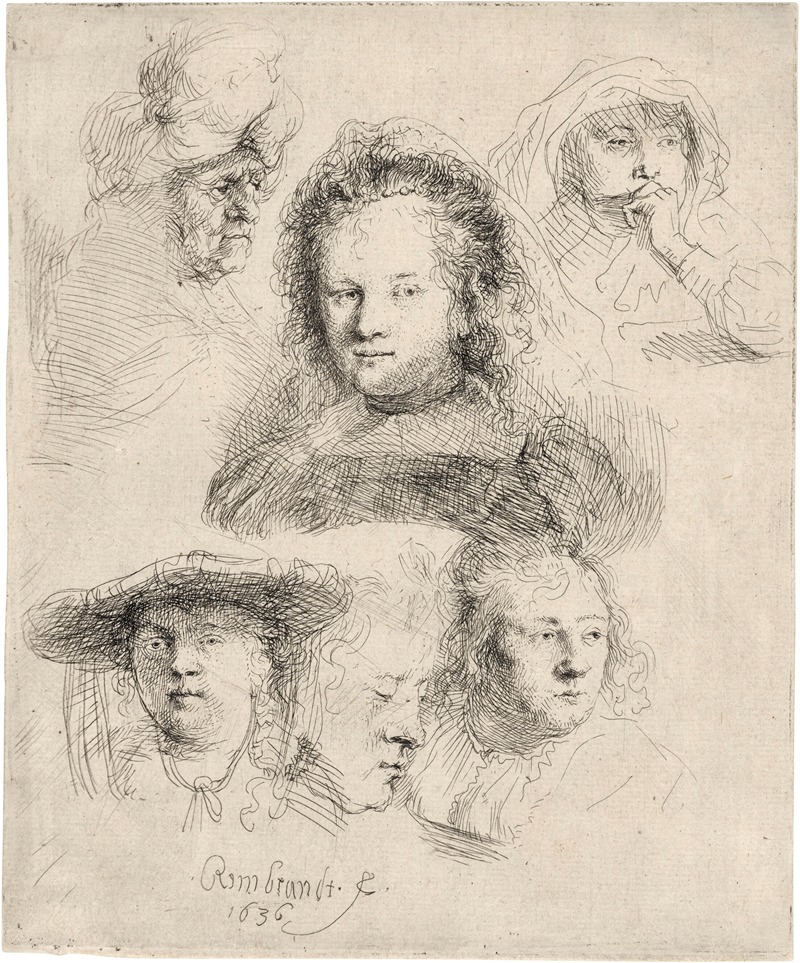
Studies of the Head of Saskia and Others
A hand-painted replica of Rembrandt van Rijn’s masterpiece Studies of the Head of Saskia and Others, meticulously crafted by professional artists to capture the true essence of the original. Each piece is created with museum-quality canvas and rare mineral pigments, carefully painted by experienced artists with delicate brushstrokes and rich, layered colors to perfectly recreate the texture of the original artwork. Unlike machine-printed reproductions, this hand-painted version brings the painting to life, infused with the artist’s emotions and skill in every stroke. Whether for personal collection or home decoration, it instantly elevates the artistic atmosphere of any space.
"Studies of the Head of Saskia and Others" is a drawing by the renowned Dutch artist Rembrandt van Rijn. This work is a fine example of Rembrandt's skill in capturing the human form and expression with remarkable detail and sensitivity. The drawing is believed to have been created around 1636, during the Dutch Golden Age, a period marked by great wealth, cultural achievement, and artistic innovation in the Netherlands.
The drawing features multiple studies of heads, including that of Saskia van Uylenburgh, Rembrandt's wife. Saskia was a frequent subject in Rembrandt's works, and her likeness appears in many of his paintings, drawings, and etchings. In "Studies of the Head of Saskia and Others," Rembrandt explores different angles and expressions, showcasing his keen observational skills and his ability to convey a range of emotions through subtle variations in facial features.
Rembrandt's technique in this drawing is characterized by his use of fine, precise lines and careful shading to create depth and texture. The drawing medium is typically pen and ink, which allows for a high level of detail and control. The studies in this drawing are likely preparatory sketches for larger works, as Rembrandt often used such studies to experiment with composition and refine his ideas before committing them to canvas.
The drawing is notable for its intimate and personal nature, as it provides a glimpse into Rembrandt's creative process and his relationship with Saskia. The inclusion of other heads in the drawing suggests that Rembrandt was also interested in capturing a variety of physiognomies and expressions, possibly for use in his narrative paintings and portraits.
"Studies of the Head of Saskia and Others" is housed in the Kupferstichkabinett (Museum of Prints and Drawings) in Berlin, Germany. The museum holds an extensive collection of drawings, prints, and other works on paper, and Rembrandt's drawing is one of the highlights of their collection. The drawing is highly valued not only for its artistic merit but also for its historical significance, as it provides insight into the working methods of one of the greatest artists of the 17th century.
Rembrandt van Rijn (1606-1669) is widely regarded as one of the most important figures in Western art history. His contributions to portraiture, landscape, and narrative painting have had a lasting impact on the development of art. Rembrandt's ability to capture the human condition with empathy and realism has earned him a place among the masters of art, and his works continue to be studied and admired by artists and scholars alike.
In summary, "Studies of the Head of Saskia and Others" is a testament to Rembrandt's extraordinary talent and his deep connection to his subjects. The drawing not only showcases his technical prowess but also offers a window into the personal and artistic world of one of history's most celebrated artists.


















